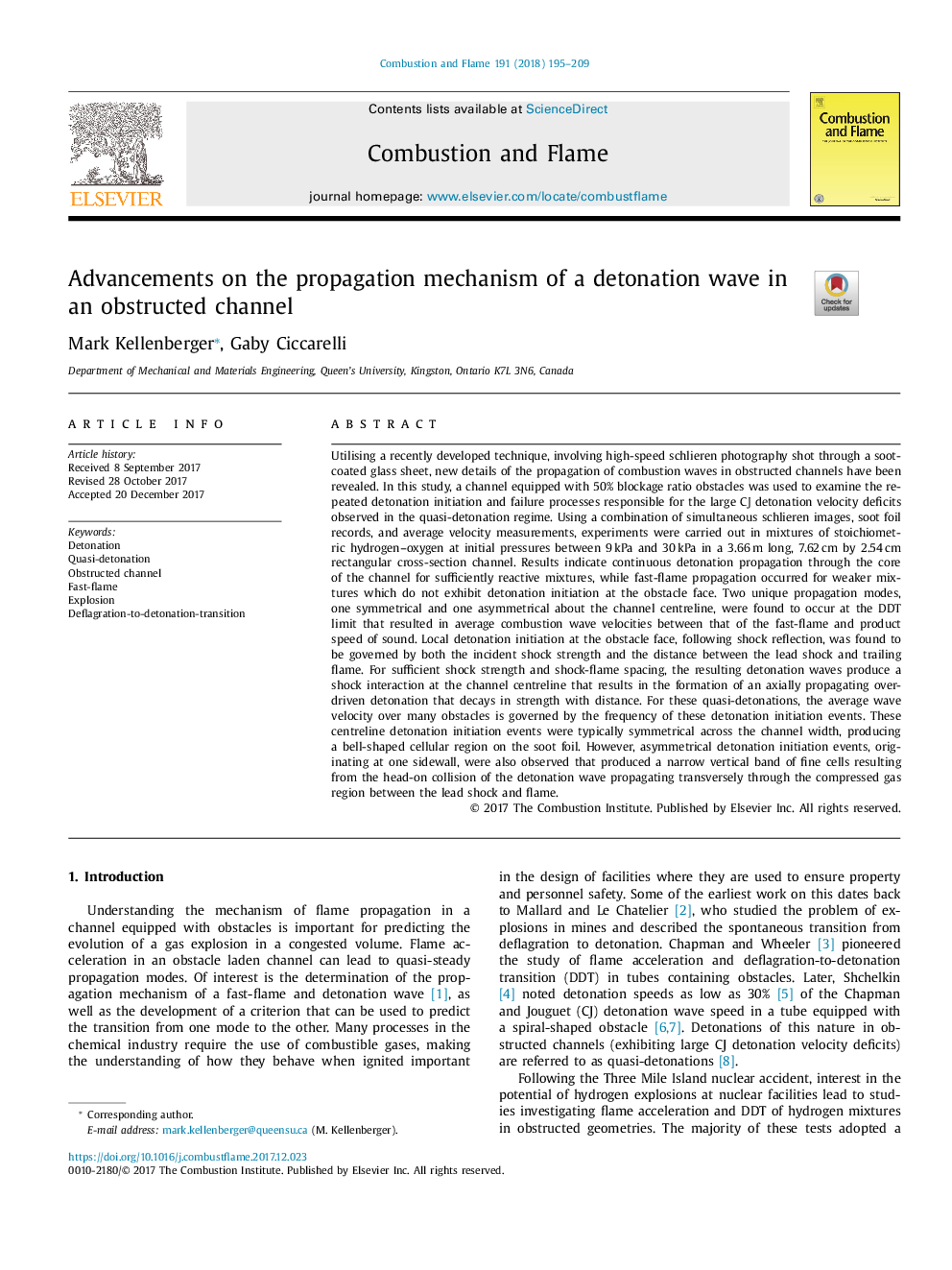| کد مقاله | کد نشریه | سال انتشار | مقاله انگلیسی | نسخه تمام متن |
|---|---|---|---|---|
| 6593747 | 1423546 | 2018 | 15 صفحه PDF | دانلود رایگان |
عنوان انگلیسی مقاله ISI
Advancements on the propagation mechanism of a detonation wave in an obstructed channel
ترجمه فارسی عنوان
پیشرفت در مکانیزم انتشار یک موج انفجاری در کانال مانع
دانلود مقاله + سفارش ترجمه
دانلود مقاله ISI انگلیسی
رایگان برای ایرانیان
کلمات کلیدی
انفجار، نیمه انفجاری، کانال ممنوع سریع شعله انفجار، جابجایی به انفجار-گذار،
موضوعات مرتبط
مهندسی و علوم پایه
مهندسی شیمی
مهندسی شیمی (عمومی)
چکیده انگلیسی
Utilising a recently developed technique, involving high-speed schlieren photography shot through a soot-coated glass sheet, new details of the propagation of combustion waves in obstructed channels have been revealed. In this study, a channel equipped with 50% blockage ratio obstacles was used to examine the repeated detonation initiation and failure processes responsible for the large CJ detonation velocity deficits observed in the quasi-detonation regime. Using a combination of simultaneous schlieren images, soot foil records, and average velocity measurements, experiments were carried out in mixtures of stoichiometric hydrogen-oxygen at initial pressures between 9â¯kPa and 30â¯kPa in a 3.66â¯m long, 7.62â¯cm by 2.54â¯cm rectangular cross-section channel. Results indicate continuous detonation propagation through the core of the channel for sufficiently reactive mixtures, while fast-flame propagation occurred for weaker mixtures which do not exhibit detonation initiation at the obstacle face. Two unique propagation modes, one symmetrical and one asymmetrical about the channel centreline, were found to occur at the DDT limit that resulted in average combustion wave velocities between that of the fast-flame and product speed of sound. Local detonation initiation at the obstacle face, following shock reflection, was found to be governed by both the incident shock strength and the distance between the lead shock and trailing flame. For sufficient shock strength and shock-flame spacing, the resulting detonation waves produce a shock interaction at the channel centreline that results in the formation of an axially propagating overdriven detonation that decays in strength with distance. For these quasi-detonations, the average wave velocity over many obstacles is governed by the frequency of these detonation initiation events. These centreline detonation initiation events were typically symmetrical across the channel width, producing a bell-shaped cellular region on the soot foil. However, asymmetrical detonation initiation events, originating at one sidewall, were also observed that produced a narrow vertical band of fine cells resulting from the head-on collision of the detonation wave propagating transversely through the compressed gas region between the lead shock and flame.
ناشر
Database: Elsevier - ScienceDirect (ساینس دایرکت)
Journal: Combustion and Flame - Volume 191, May 2018, Pages 195-209
Journal: Combustion and Flame - Volume 191, May 2018, Pages 195-209
نویسندگان
Mark Kellenberger, Gaby Ciccarelli,
